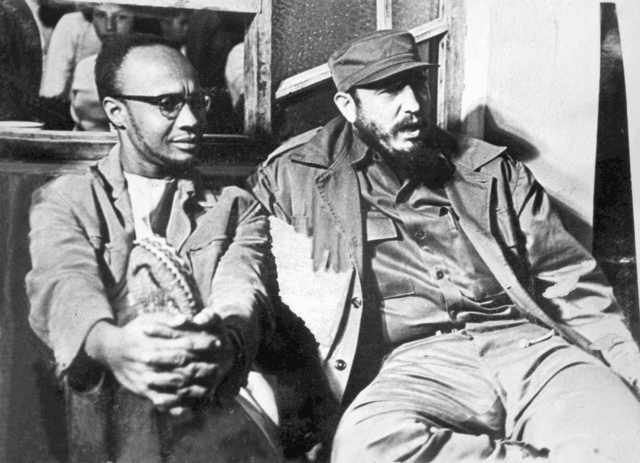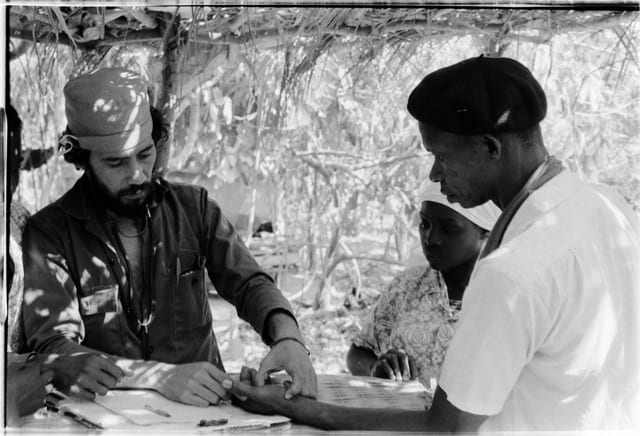Cuba, Castro and the Portuguese Guinea
Cuba highly likely achieved a necessary success in its pursue of armed revolutions.
Portugal and its colony, Portuguese Guinea, engaged in a war between 1966 and 1973. The African Party for PAIGC confronted, with Soviet and Cuban help, the Portuguese colonial rule. In 1974, the PAIGC declared independence from Portugal. This portrayed a successful guerrilla campaign and labelled the conflict ‘Portugal’s Vietnam’.
The fall of Ben Bella, failures in Congo and Zaire, and the death of Che Guevara left Dar-Es-Salaam as the significant operational hub of the Cuban government. Obtaining legitimacy and operational capacity in Guinea-Bissau was almost certainly essential to continue subversive activities and armed revolutions in Africa.
The necessary success intended in Guinea-Bissau likely served more interests apart from obtaining operational capability. Cuba’s international image likely depended on the capability to successfully wage revolutions. A victory in Guinea-Bissau likely placed the Castro regime as a facilitator of revolutions. This clearly contrasted to failures in Congo and Zaire.
The PAIGC, Revolution and Guinean identity
Following Portuguese repression on workers on strike, the PAIGC turned to attacks and guerrilla-tactics. Using neighbouring Guinea as a safe-haven, the leader of the PAIGC Amilcar Cabral re-organised the headquarters in the capital Conakry. The intention was to gather and unite rural tribes, particularly Balanta and Majako, to create a capable paramilitary force in the country and isolate urban areas. Ultimately, Portuguese figures reached 27,000 personnel while PAIGC reached 7,000.
The CIA recognised in a memo the evolution of the tactics employed by the PAIGC. There was a clear improvement from “random acts of terror and sabotage” to a “better coordinated, wide-spread guerrilla war”. It is almost certain that the Cuban training and involvement caused improvement. Nonetheless, interference in Guinea-Bissau was covert for Cuba to achieve a necessary success. Cabral stated the need for Guinean’s to carry out the revolution alone. He was seeking Cuban volunteers who were black to pretend solely Guineans operated in the PAIGC.
Cuba: Support
Military
Cuba demonstrated adaptative qualities in supplying paramilitary aid to Guinea to achieve the necessary success. After an initial DGI officer was replaced for a lack of results, Castro recruited Dreke. Dreke was the head of the mission in Zaire, and his best men. On the other hand, when Dreke suggested an addition of 200-300 men, Cabral rejected the proposition. Castro’s limited capacity of decision-making in Guinea-Bissau likely pushed Cuba to provide alternative assistance through doctors and medical aid.
An average of 60 Cuban volunteers were present in Guinea. Although the roles undertaken by Cuban officers as well as the material aid likely compensated for the small personnel capacity. The advanced knowledge of Cubans led the foreigners to operate artillery machinery sent by the USSR. PAIGC rebels were trained in its use, although Cubans ended operating the knowledge-demanding machinery. Ships like the ‘Lidia Doce’ docked in Bissau in June 1966, and crates of weapons flowed to the PAIGC headquarters in Conakry. Cuban military assistance left 9 deceased personnel. It can be characterised as being an active player while maintaining a minor symbolic role in resolving the conflict.
Medical
Providing on-ground support to a revolution expanded further than paramilitary assistance, whether its through personnel, weapons or material. Cuba sent 23 doctors, providing medical and psychological assistance to guerrilla members of the PAIGC. The necessary success of Cuban efforts in Guinea passed through the positive outlook of Cuban intervention once the revolution succeeded. Cuba’s intentions of gaining influence in Africa through Guinea-Bissau likely needed to be seen as altruistic from an outside perspective. This does not suggest that the medical assistance served solely an enrichment purpose. Instead, it was likely used by Castro to reinforce and bind successes by the paramilitary mission.
Outlook
Maintaining a discreet appearance yet significantly contributing to the revolution was a likely objective of the Cuban regime. Cuba demonstrated a capability to support a successful revolution across a continent and signalled elevated capabilities. Assistance was crucial to the necessary success of the PAIGC. Indeed likely mantaining a clandestine nature saw Cuba increasingly legitimised in Guinea and Africa. The DGI, by playing a coordinator role and avoiding publicity, was likely able to establish a regional office in Bissau. This divided the importance of the Dar-Es-Salaam office.




